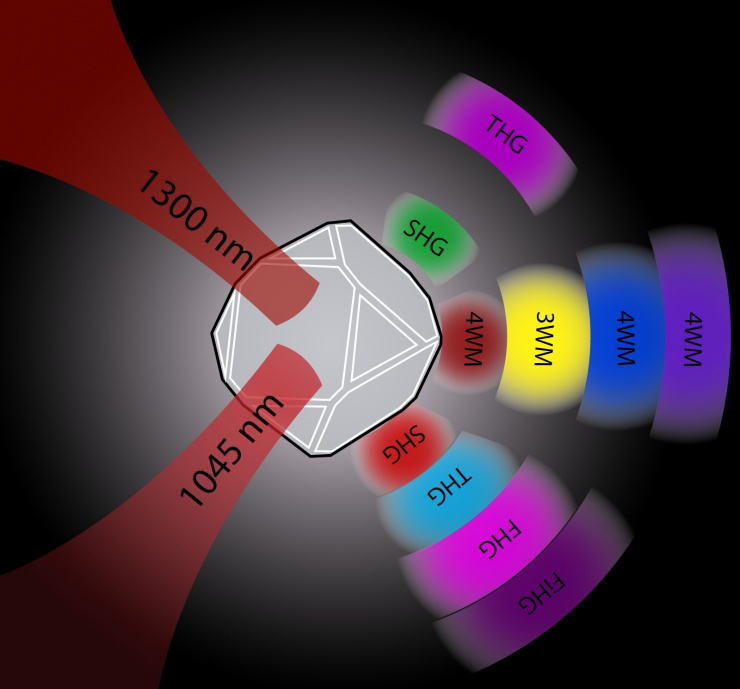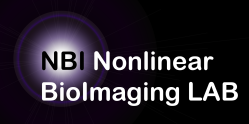Ongoing projects
Funding: ICT-36-2020 - Disruptive photonics technologies
FAIR CHARM: Advancing multiphoton microscopy for deeper and faster biomedical imaging
The development of new therapeutic strategies for different types of diseases requires dedicated instruments capable of encompassing biological problems in their entirety by monitoring them at all relevant length- and timescales. The EU-funded FAIR CHARM project aims at providing two complementary imaging solutions, SWIM and SLIDE, which transform the capacity to capture in real-time the biological processes as well as the cellular and extracellular structures involved in disease onset and progression. While the SWIM microscope uses novel laser sources in the infrared wavelength region around 1700 nm to penetrate deeper into biological tissue, the SLIDE microscope pushes the boundaries of fast multiphoton microscopy to imaging rates in excess of several thousand images per second.
Project coordinator: Luigi Bonacina

Funding: SNF via WEAVE scheme (CH, Flanders, DE)
ADAPT: Adaptive and predictive arbitrary point scanning two photon tomography
With this WEAVE project, we aim to advance and tailor the spectro-temporal laser imaging by diffractive excitation technique previously introduced by one partner to the challenges of neurophotonics by: i) acquiring volumetric imaging of layered neuronal structures (cortex, intestine) at the inherent timescales of their functional processes (20Hz volume rate); ii) developing a dedicated near infrared source to image and benefit from the matured GCaMP family of fluorescence proteins; iii) analyzing and optimizing signal yield and sample damage introducing rapid adaptive scanning and sampling protocols; iv) correcting wavefront distortions and accounting for specimen movements by employing nonlinear fiduciary markers embedded in tissue depth.

Funding: SNF via ANR/SNF Leading Agency Scheme (CH, FR)
DARE: Deep And REsolved
Within the DARE, we will address the issue of cell tracking in a unified framework, by synthetizing and validating a new generation of multifunctional nanoparticles;(NPs) which will combine multimodal detection capability with on-demand release of drug molecules and in-situ temperature sensing, thanks to the physical. properties of their core structures and the advanced functionalisation of their surfaces. The four main tasks of DARE are the i) synthesis and ii) surface functionalization of multifunctional NPs together with the iii) quantitative assessment of the different contrast efficiencies and drug carrier properties, and iv) benchmarking against the state-of-the-art. An additional feature, which deems essential for any further dissemination and use in (pre)clinical contexts of the multifunctional probes, is the definition and demonstration of a robust upscaling for the synthesis of the nanomaterials selected and perfected during the project.
Research themes

Further readings
-
Campargue, G., La Volpe, L., Giardina, G., Gaulier, G., Lucarini, F., Gautschi, I., Le Dantec, R., Staedler, D., Diviani, D., Mugnier, Y. and Wolf, J.P., Bonacina, L. Multiorder Nonlinear Mixing in Metal Oxide Nanoparticles, Nano Letters 2020., 20(12): 8725-8732.
-
Bonacina, L.; Brevet, P.-F.; Finazzi, M.; Celebrano, M. Harmonic Generation at the Nanoscale. Journal of Applied Physics 2020, 127 (23): 230901.
-
Karpf, S. Glöckner Burmeister, N. Dubreil, L. Ghosh, S. Hollandi, R. Pichon, J. Leroux, I. Henkel, A. Lutz, V. Jurkevičius, J. Latshaw, A. Kilin, V. Kutscher, T. Wiggert, M. Saavedra‐Villanueva, O. Vogel, A. Huber, R.A. Horvath, P. Rouger, K. Bonacina, L. Harmonic Imaging of Stem Cells in Whole Blood at GHz Pixel Rate, Small 2024, 2401472
-
Rogov, A.; Mugnier, Y.; Bonacina, L. Harmonic nanoparticles: noncentrosymmetric metal oxides for nonlinear optics. J. Opt. 2015, 17 (3): 033001.
Harmonic Nanoparticles
The term Harmonic Nanoparticles (HNPs) indicates a family of metal oxide nanocrystals possessing appealing optical properties aside from classical luminescence. In fact, because of the lack of inversion symmetry in their crystal structure, these materials display high nonlinear optical response. In particular, the lowest nonlinear term of their nonlinear susceptibility, χ(2), is non vanishing differently from the case of isotropic materials. For this reason, they are primarily employed in imaging applications based on second harmonic generation. We have recently shown that third and higher harmonic generation and frequency mixings are also detectable under standard imaging conditions for some of these materials, hence the name.
The distinctive features of HNPs as opposed to luminescent probes include their fully coherent emission, quasi-instantaneous response, the absence of bleaching/blinking when excited outside the absorption bands of the material, and spectral flexibility (spanning from the ultraviolet to the infrared). This last asset is particularly appealing for bio-imaging applications, as HNPs allows imaging beyond the “classical” tissue transparency window (NIR I: 650-950 nm), in the newly addressed NIR II (1100-1350 nm) and NIR III (1600-1870 nm) windows. Working in these spectral regions enables sensibly deeper imaging penetration because of reduced scattering at longer wavelengths.
We have shown that the simultaneous detection of multiple harmonics from the same nano-object benefits to selectivity in imaging and sensing applications. Our present research spans from fundamental optical characterization to bio-oriented demonstrations such as cell tracking in tissue and physiological fluids, with a specific focus on regenerative medicine and immunotherapy applications.

